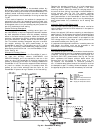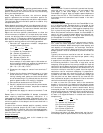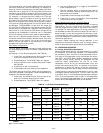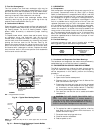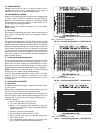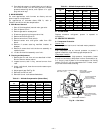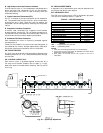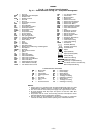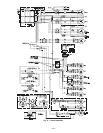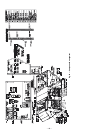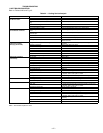
—40—
VII. POWER FAILURE
Dampers have a spring return. In event of power failure,
dampers will return to fully closed position until power is
restored. Do not manually operate damper motor.
VIII. REFRIGERANT CHARGE
Amount of refrigerant charge is listed on unit nameplate and
in Table 1. Refer to GTAC II; Module 5; Charging, Recovery,
Recycling, and Reclamation section for charging methods
and procedures. Unit panels must be in place when unit is
operating during charging procedure.
NOTE: Do not use recycled refrigerant as it may contain
contaminants.
A. No Charge
Use standard evacuating techniques. After evacuating sys-
tem, weigh in the specified amount of refrigerant (refer to
Table 1).
B. Low Charge Cooling
Using cooling charging chart (see Fig. 35-37), add or remove
refrigerant until conditions of the chart are met. An accurate
pressure gage and temperature-sensing device is required.
Charging is accomplished by ensuring the proper amount of
liquid subcooling. Measure liquid line pressure at the liquid
line service valve using pressure gage. Connect temperature
sensing device to the liquid line near the liquid line service
valve and insulate it so that outdoor ambient temperature
does not affect reading.
C. To Use the Cooling Charging Chart
Use the above temperature and pressure readings, and find
the intersection point on the cooling charging chart. If inter-
section point on chart is above line, add refrigerant. If inter-
section point on chart is below line, carefully recover some of
the charge. Recheck suction pressure as charge is adjusted.
NOTE: Indoor-air cfm must be within normal operating
range of unit. All outdoor fans must be operating.
The TXV (thermostatic expansion valve) is set to maintain
between 10 and 15 degrees of superheat at the com-
pressors. The valves are factory set and should not require
re-adjustment.
IX. GAS VALVE ADJUSTMENT
A. Natural Gas
The gas valve opens and closes in response to the thermostat
or limit control.
When power is supplied to valve terminals W2 (High Fire)
and C1, the main valve opens to its preset position.
The regular factory setting is stamped on the valve body. The
setting is 3.00 in. wg for vertical supply/discharge units. The
setting is 2.95 in. wg for horizontal supply/discharge units.
To adjust regulator:
1. Set unit at setting for no call for heat.
2. Turn main gas valve to OFF position.
3. Remove
1
/
8
-in. pipe plug from manifold or gas valve
pressure tap connection. Install a suitable pressure-
measuring device.
4. Set main gas valve to ON position.
5. Set thermostat at setting to call for heat.
6. Remove screw cap covering regulator adjustment
screw (see Fig. 38).
7. Turn adjustment screw clockwise to increase pres-
sure or counterclockwise to decrease pressure.
LEGEND
TXV — Thermostatic Expansion Valve
Fig. 35 — Cooling Charging Chart — 581A210 Units
LEGEND
TXV — Thermostatic Expansion Valve
Fig. 36 — Cooling Charging Chart — 581A240 Units
LEGEND
TXV — Thermostatic Expansion Valve
Fig. 37 — Cooling Charging Chart — 581A300 Units



